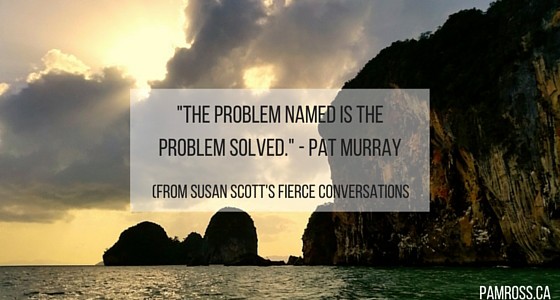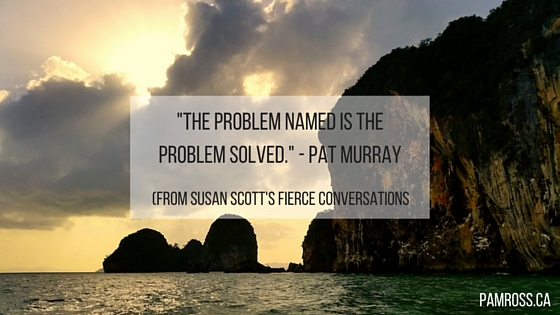I’m prepping for a Courageous Conversations workshop tomorrow and as I’m reviewing the materials, I’m remembering the feedback and “a-ha” moments that we often get when we deliver this training to leaders. There are three things that stand out to me as I look back at what past participants said about their most important learning after attending one of these workshops.
Reject the Fight or Flight Response
The “fight or flight” response serves animals in the wild well. Threats are visible, obvious and life threatening. For humans, though, more complex responses are necessary. When we find ourselves in a difficult situation with someone, we need to consciously decide how to react.
We change the fight or flight response to a conscious decision to “let it go” or to have a courageous conversation. The key here is the conscious decision part. It is important that if you decide to let it go, it is truly something that you can let go of – not something that will fester in the back of your mind until the next time something happens with this person. Consciously deciding means weighing the cost of letting it go versus improving the situation. It means thinking through the benefits to you, the other person, your team, your organization, of both options.
If you let it go, then be sure you’re not in “flight” mode but that you are confident the issue will no longer cause you stress, tension or concern.
Challenge Assumptions and Change Your Story
When we are met with a difficult situation, we write an entire drama about it in our head. Think about the times you’ve imagined how someone will react, why they have done what they did, what their motives are. If I learned only one thing from my four-year Psychology degree, it is that we can never anticipate someone else’s reactions or thoughts based on our own. Everyone’s perception, approach, and thought process is different from ours – and neither is better, worse, or wrong or right. When we write the story in our head, the outcome is usually dozens of times worse that what actually happens if we move forward to have a conversation with courage and curiosity.
We change the story from one of “what’s wrong with this person” or “if I talk to this person, it will go badly” to a story based on curiosity and courage to make a positive impact. The story becomes “This person is a reasonable, good person – I wonder why someone with positive intentions would do this?” and “if I talk to this person, I wonder how it could improve our relationship?”
Challenge your own assumptions about the person you have difficulty with. When you change your story, your intention becomes more positive, and the conversation itself will often go more positively, as you’re approaching it with a more curious and open mind.
Discuss the Real Problem
When we approach a difficult conversation, we often don’t discuss the real problem. We identify a surface situation, and address that. In my experience, much of the time the conversation that we really should be having is deeper. It often involves emotions as well as actions and outcomes. Let’s consider the example of a team member not following through on an assignment on time, causing you to fill in and do some of his work. The conversation we might have is about the fact that he didn’t follow through on his commitment and that the impact was that you had to step in. When we keep the conversation at this surface level, about facts, actions and outcomes, we’re often not addressing the real problem – that you have lost trust in your team member, and it’s affecting how you perceive his commitment level or respect for you.
In Susan Scott’s book, “Fierce Conversations”, she shares this quote, which highlights the need for clarifying the real problem:
If you find yourself addressing similar problems time after time, it’s likely you haven’t addressed the deeper, real problem.
Spend some time asking yourself why this is bothering you, what is the impact it’s having, why it matters. You’ll often find it has to do with trust, fear, or another deeper emotion.
Facing difficult conversations with courage requires authenticity, positive intent, and vulnerability. It’s okay to talk about your feelings – great leaders share how they feel. It builds greater trust and relationships.
These are only three of the many tactics we teach in our practice of having Courageous Conversations, but they are the three that our workshop attendees find incredibly impactful when they use them with real situations.
What do you find helpful when having a courageous conversation? I’d love to hear what you find works for you! Please share in the comments section or on our Facebook page!


